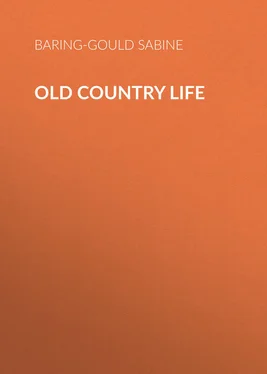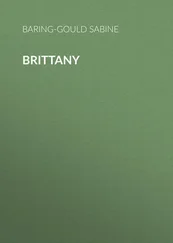Sabine Baring-Gould - Old Country Life
Здесь есть возможность читать онлайн «Sabine Baring-Gould - Old Country Life» — ознакомительный отрывок электронной книги совершенно бесплатно, а после прочтения отрывка купить полную версию. В некоторых случаях можно слушать аудио, скачать через торрент в формате fb2 и присутствует краткое содержание. Жанр: foreign_antique, foreign_prose, на английском языке. Описание произведения, (предисловие) а так же отзывы посетителей доступны на портале библиотеки ЛибКат.
- Название:Old Country Life
- Автор:
- Жанр:
- Год:неизвестен
- ISBN:нет данных
- Рейтинг книги:5 / 5. Голосов: 1
-
Избранное:Добавить в избранное
- Отзывы:
-
Ваша оценка:
- 100
- 1
- 2
- 3
- 4
- 5
Old Country Life: краткое содержание, описание и аннотация
Предлагаем к чтению аннотацию, описание, краткое содержание или предисловие (зависит от того, что написал сам автор книги «Old Country Life»). Если вы не нашли необходимую информацию о книге — напишите в комментариях, мы постараемся отыскать её.
Old Country Life — читать онлайн ознакомительный отрывок
Ниже представлен текст книги, разбитый по страницам. Система сохранения места последней прочитанной страницы, позволяет с удобством читать онлайн бесплатно книгу «Old Country Life», без необходимости каждый раз заново искать на чём Вы остановились. Поставьте закладку, и сможете в любой момент перейти на страницу, на которой закончили чтение.
Интервал:
Закладка:
The hall had in it a brazier in the midst, which could never heat it, though the numbed fingers might be thawed at it. Adjoining the hall is the ladies' bower, a sitting-room dark as a vault, with indeed a fireplace in it. These were the sole rooms that were occupied by day, the hall and the bower.
The Arundels had another place at Ebbfleet, near Stratton, which was no bigger, and only a little less gloomy; the windows were always made, for protection, to look into a court. It was not till after the Wars of the Roses that there was more light allowed into the chambers.
I give a sketch and plan of a manor-house still almost unaltered, called Willsworthy, in the parish of Peter Tavy in Devon. It is built entirely of granite. It has near it a ruined chapel, but what family occupied it and when I do not know; it has not certainly been tenanted by gentlefolks since the reign of Henry VIII.
It was not till the Tudor period that the houses of our forefathers became comfortable and cheerful.
We should be wrong, however, if we supposed that in the Elizabethan period the windows were designed so much for looking out at as for letting the sun look in at. The old idea of a quadrangle was not discarded, but it was modified. The quadrangle became a pleasant garden within walls; the destruction of the walls to afford vistas was the work of a later age.
The normal plan of a house till the reign of Elizabeth was the quadrangle; but then, in the more modest mansions, the house itself did not occupy more than a single side of the court, all the rest was taken up with barns and stables, and the windows of the house looked into this great stable-yard. On the side of Coxtor, above Tavistock, stands an interesting old yeoman's house, built of solid granite, which has remained in the possession of the same worthy family for many generations, and has remained unaltered. This house, in little, shows us the disposition of the old squire's mansion, for the yeoman copied the plan of the house of the lord of the manor. A granite doorway gives admission to the court, surrounded on all sides but the north by stabling. On the north side, raised above the yard by a flight of steps, is a small terrace laid out in flower-beds; into this court all the windows of the house look. We enter the porch, and find ourselves in the hall, with its great fireplace, its large south window, where sits the mistress at her needlework, as of old; and here is the high table, the wall panelled and carved, where sit the yeoman and his family at meals, whilst the labourers sit below. This very simple yet interesting house is quite a fortress; it is walled up against the stormy gales that sweep the moor. It is a prison too, for it catches and holds captive the sunbeams that fall into the bright little court.
We are too ready to regard our forefathers as fools, but they knew a thing or two; they were well aware that in England, if we want flowers to blow early and freely, they must be sheltered.
It was not till the reign of Charles II. that the fancy came on English people to do away with nooks and corners, and to build oblong blocks of houses without projections anywhere.
The new Italian, or French château style, had its advantages, but its counterbalancing disadvantages. The main advantage was that the rooms were loftier than before; the walls, white and gold, were more cheerful at night; there may have been other advantages, but these are the only two that are conspicuous. The disadvantages were many. In the first place, no shelter was provided out of doors from the wind; no pleasant nooks, no sun-traps. The block of building, naked and alone, stood in the midst of a park, and the wind whistled round it, and the rain drove against it. When the visitor arrived in bad weather, he was blown in at the door, and nearly blown through the hall. In our eagerness to make vistas, obtain extensive landscapes, we have levelled our enclosing walls. But what could have been a sweeter prospect from a hall or parlour window, than an enclosed garden full of flowers, with bees humming, butterflies flitting, and fruit-trees ripening their burdens against old red brick enclosing walls, tinted gorgeously with lichens?
There is at present a fashion for being blown about by the wind, so we unmuffle our mansions of their enclosing walls and hedges. But England is a land of wind. Nothing strikes an Englishman more, when living abroad, than the general stillness of the air. Look at the wonderful bulbous spires and cupolas to towers on the Continent; – marvellously picturesque they are. If examined, they are found to be very generally covered with the most delicate slate work, that folds in and out of the crinks and crannies, like chain mail. Such slating would not endure three winters in England; it would be torn adrift and scattered like autumn leaves before an equinoctial gale. We never had these bulbous spires in England, because the climate would not permit of their construction. Our forefathers knew that this was a windy world of ours —
"Sing heigh ho for the wind and the rain,
For the rain it raineth every day,"
and they built their houses accordingly – to provide the greatest possible amount of shelter from the cold blasts of March, and from the driving rains of winter. The house originally consisted on the ground-floor of hall, parlour, kitchen, and entrance-porch and stairs. In later times the side wing was carried further back, and a second parlour was built, and the staircase erected between the parlours.
At Upcott, in Broadwood, in Devon, is a house that belonged to the Upcotts. The plan is much the same as that of Willsworthy, even ruder, though the house itself was finer. It had a porch, a hall, and a dairy and kitchen. The parlour is of Queen Anne's reign, and probably takes the place of one earlier on the same spot. The plan of Hurlditch is the same, a mansion of the important family of Speccot. There also the parlour is comparatively recent.
There was in a house previous to the reign of Henry VII. but one good room, and that was the hall. It opened to the roof, and must have been cold enough in winter, and draughty at all times.
At Wortham, the fine mansion of the Dynhams, there was an arrangement, as far as I know, unique – two halls, one for winter with a fire-place in it, serving as a sort of lower story to the summer-hall, clear to the roof – thus one is superposed on the other.
Tonacombe, a mansion of the Leys and Kempthornes in Morwenstowe parish in Cornwall, is a singularly untouched house of a somewhat similar construction, but enlarged. Here there was the tiny entrance-court into which the hall looked; the hall itself being open to the roof, with its great fire-place, and the parlour panelled with oak. All other reception-rooms are later additions or alterations of offices into parlours.
With the reign of the Tudors a great sense of security and an increase of wealth must have come to the country gentry, for they everywhere began to rebuild their houses, to give them more air and light, and completely shook off that fear which had possessed them previously of looking out into the world. Then came in an age of great windows. It would seem as though in the rebound they thought they could not have light enough. Certainly glass must have been inexpensive in those days. It was the same in the churches; the huge perpendicular windows converted the sacred edifices into lanterns. The old halls open to the roof gave way to ceiled halls, and the newel staircase in the wall – very inconvenient, impossible for the carrying up or down-stairs of large furniture – was discarded for the broad and stately staircase of oak.
It seems to me that the loss of shelter that ensued on the abandonment of the quadrangle, or of the E-shaped Elizabethan house, is not counterbalanced by the compactness of the square or the oblong block of the Queen Anne house. Moreover, the advantages internally were not so great as might be supposed, for, to light the very lofty room the windows were made narrow and tall; thus shaped they admitted far less sun than when they were broad and not tall.
Читать дальшеИнтервал:
Закладка:
Похожие книги на «Old Country Life»
Представляем Вашему вниманию похожие книги на «Old Country Life» списком для выбора. Мы отобрали схожую по названию и смыслу литературу в надежде предоставить читателям больше вариантов отыскать новые, интересные, ещё непрочитанные произведения.
Обсуждение, отзывы о книге «Old Country Life» и просто собственные мнения читателей. Оставьте ваши комментарии, напишите, что Вы думаете о произведении, его смысле или главных героях. Укажите что конкретно понравилось, а что нет, и почему Вы так считаете.












